Allport, William (McKechnie Section 2)
Known from silhouettes which bear the artist's trade labels, also from several which bear the trade labels of William Bullock, and which have previously been ascribed to Bullock, but which are now known to be the work of Alport, carried out at Bullock's Museum of National History and Antiquities in Liverpool. (For an account of Bullock see Appendix Four). There seems to be no connection between William Alport and the Allport discussed in Section One.
An example of Alport's work, painted in a style closely similar to that of silhouettes previously recorded as Bullock's work, was sold by Sotheby and Company, on 15 December 1969.
659
Bullock's own trade labels contain the words 'Drawn . . . in the house of W. Bullock' (not 'drawn by W. Bullock'). The hand written inscription on the back of Alport's silhouette is illustrated.
665
It is now certain, therefore, that Bullock himself was not a profilist at all. His trade labels were printed for use on silhouettes taken by Alport and other artists working for him at his museum.
In 1810 Bullock left Liverpool and set up his museum in premises in London. He left behind in Liverpool a physiognotrace, the 'invention' of which he had first advertised in Liverpool on 15 October 1806 and which Alport (who may have bought it from Bullock before the latter's departure) and other artists used while in his employment. This physiognotrace (presumably an adaptation of the model invented by G. L. Chértien) was therefore presumably not in use until 1806, and profiles bearing labels of Bullock which refer to it cannot have been painted before this date. That other artists, apart from Alport, used the machine is known from the existence of profiles painted in totally different styles, bearing Bullock's trade labels and housed in papier mâché frames bearing hangers inscribed with the word 'museum'.
Profiles painted by Alport bearing Bullock's trade labels and/or museum hangers therefore date from 1806-1810; thereafter he worked under his own name at least until 1829. Enquiry at the City of Liverpool Reference Library yielded the following information, taken from directories, about Alport's addresses and occupations in Liverpool from 1810 until 1829:
1810 46 Stanley Street Household broker
1811 46 Stanley Street Artist and household broker
1814 53 Stanley Street As above
1818 52 Stanley Street As above
1818-27 51 Stanley Street As above
1829 5 Russell Place William Alport the elder and William Alport the younger both listed as painters at this address
We do not know whether Alport confined his art to painting profiles, nor do we have any evidence that his son, referred to in the last entry, was also a profilist. We can infer from these entries that, after Bullock's departure for London, Alport continued to work as a profilist, augmenting what was probably his main source of income as a household broker.
Two interesting points emerge. Firstly, Alport did not advertise himself as an artist until after Bullock's departure. Secondly, in the 1810 entry his name is
spelt 'Alspoilt' which may reflect contemporary Liverpool pronunciation. (The name is sometimes spelt with one 'I', sometimes with two, but this is immaterial.) The address 46 Stanley Street is sufficient confirmation of Alport's identity as the profilist, since it is given on the handwritten trade label on the reverse of the illustrated profile of Edward Strangwayes
659
Alport's profiles are painted in black, though the black is not intense. Very fine brushwork indicates the outline of the hair. Most surviving silhouettes are of men. On these, neckwear is carefully painted in tones of grey, and in all cases a line is drawn along the neat diagonal lines indicating the shirt-frill, stressing the outline of the edge. On most profiles 'corrugation' of the coat is shown at the back. Again, on most examples, one to three lines are drawn beneath the bust-line, giving the base a neat finish. This point of style is illustrated by some magnified photographs of details shown not at the end of the Section, but with the other illustrations of Alport's work.
There are fewer extant profiles of women; one is illustrated, from which it will be seen that Alport did not attempt to show much of the sitter's neckwear.
All extant silhouettes have low, plunging bust-line terminations.
The trade labels of W. Bullock, seen on silhouettes by Alport, are discussed and illustrated in the entry on Bullock in Appendix Four. Alport himself, however, used a handwritten trade label (illustrated; dated March 1813) on which he states prices of 5s for a profile and 8s 6d for the frame.
Other marks of identification have been seen on silhouettes by Alport. One example, in the Victoria and Albert Museum, London, bears a small monogram of the initials 'W. A.' above the profile. Another, recently offered for sale by Sotheby Parke Bernet, London, bore an interesting hanger, with a representation of a head (presumably that of George III), in classical style, surmounted by a royal crown. Whether or not Alport was entitled to use this royal insignia is doubtful; the example might have been reframed, but I have not seen this particular hanger on a papier mâché frame used by any artist.
Ills. 655-665
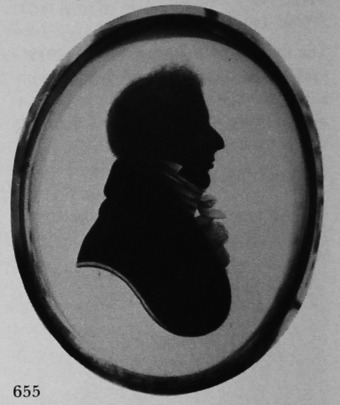
Unknown man
Silhouette painted on card
c. 1806-1808
Trade Label No. 1 of William Bullock
3¾ x 3in./96 x 77mm.
Frame: papier mâché
Taken at William Bullock’s museum in Liverpool. The frame has a hanger with the word ‘museum’ embossed on it.
Author’s collection
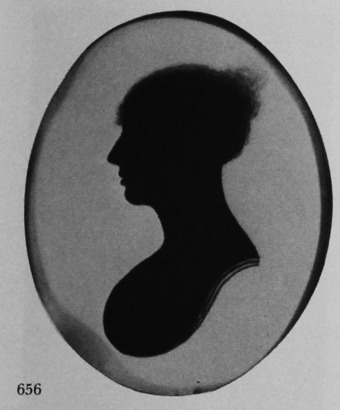
Mrs A. Maiser
Silhouette painted on card
1807
3¾ x 2¾in./96 x 70mm.
Frame: papier mâché
Since the frame has the hanger with the word ‘museum’ engraved on it, this silhouette must have been taken at William Bullock’s museum in Liverpool, although there is no trade label.
Graham Robinson collection
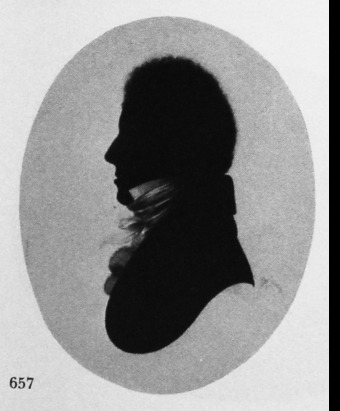
Unknown man
Silhouette painted on card
c. 1808
3¾ x 2¾in./96 x 70mm.
Frame: papier mâché
The frame has the hanger with the word ‘museum’ embossed on it.
Though this profile lacks Alport’s characteristic lines below the base, it is sufficiently similar to his authenticated work to be safely attributable to him.
P. G. Higgs collection
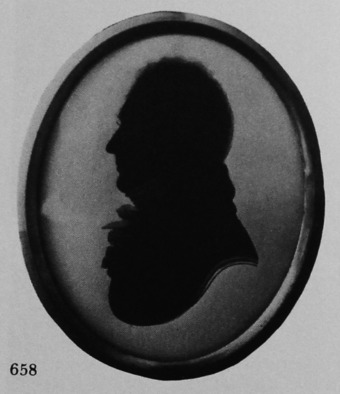
Unknown man
Silhouette painted on card
c. 1808
Trade Label No. 2 of William Bullock
3 3/8 x 2¾in./96 x 70mm.
Frame: papier mâché
Taken at William Bullock’s museum in Liverpool. The frame has the hanger with the word ‘museum’ engraved on it.
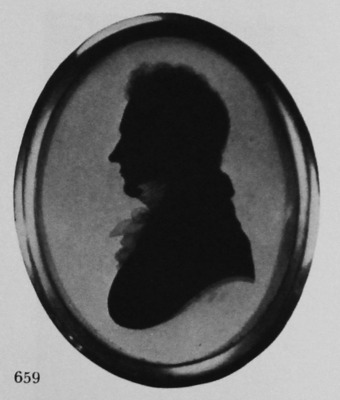
Edward Strangwayes, of Leeds and Well
Silhouette painted on card
March 1813
3½ x 2 5/8 in./90 x 67mm.
Trade Label
The sitter, son of Richard and Louisa Strangwayes of Oak Villa and Well, was born at Well in 1786 and died there in 1864. Inscribed ‘Taken of E. S. March, 1813, Liverpool’.
Author’s collection
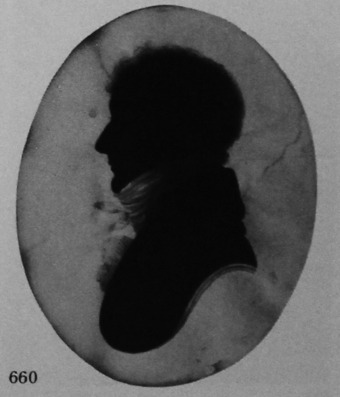
R. Mowbray
Silhouette painted on card
1829
3 ¼ x 2 ½ in./83 x 64mm.
The silhouette is inscribed ‘Leith’ (possibly visited by Alport while touring), with the date.
D. S. Patton collection
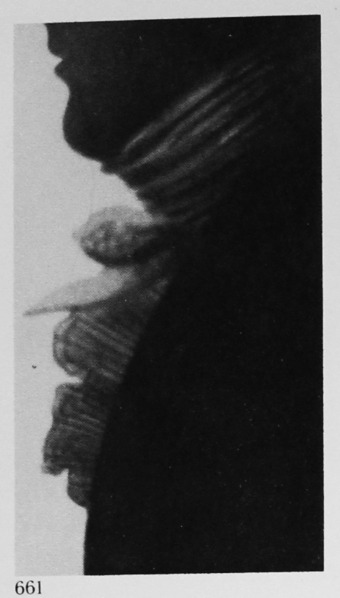
Detail from a silhouette (658) by William Alport, c. 1808, showing the sitter’s cravat and shirt-frill
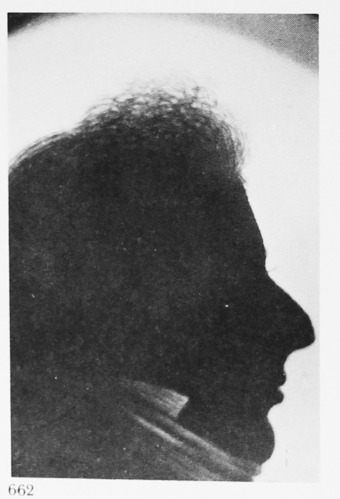
Detail from a silhouette (655) by William Alport, 1806-1808, showing the sitter’s head.
Author’s collection
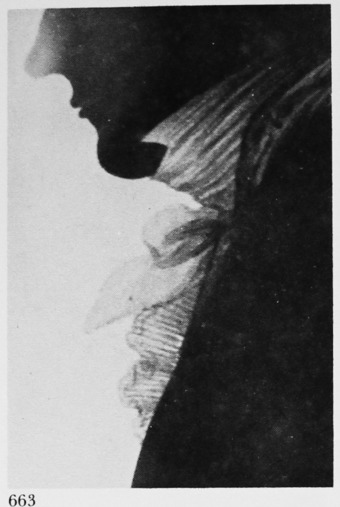
Details from a silhouette (659) by William Alport, March 1813, showing respectively the sitter’s cravat and shirt-frill, and part of his head.
Author’s collection
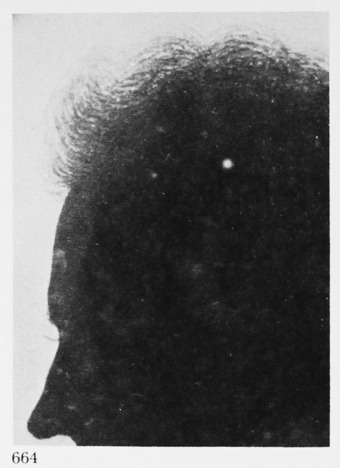
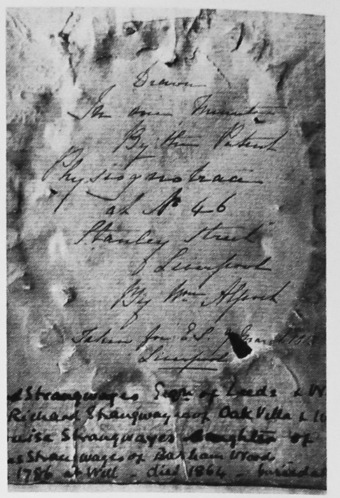
Handwritten trade label of William Alport, March 1813, from the silhouette shown in 659.
Author’s collection
